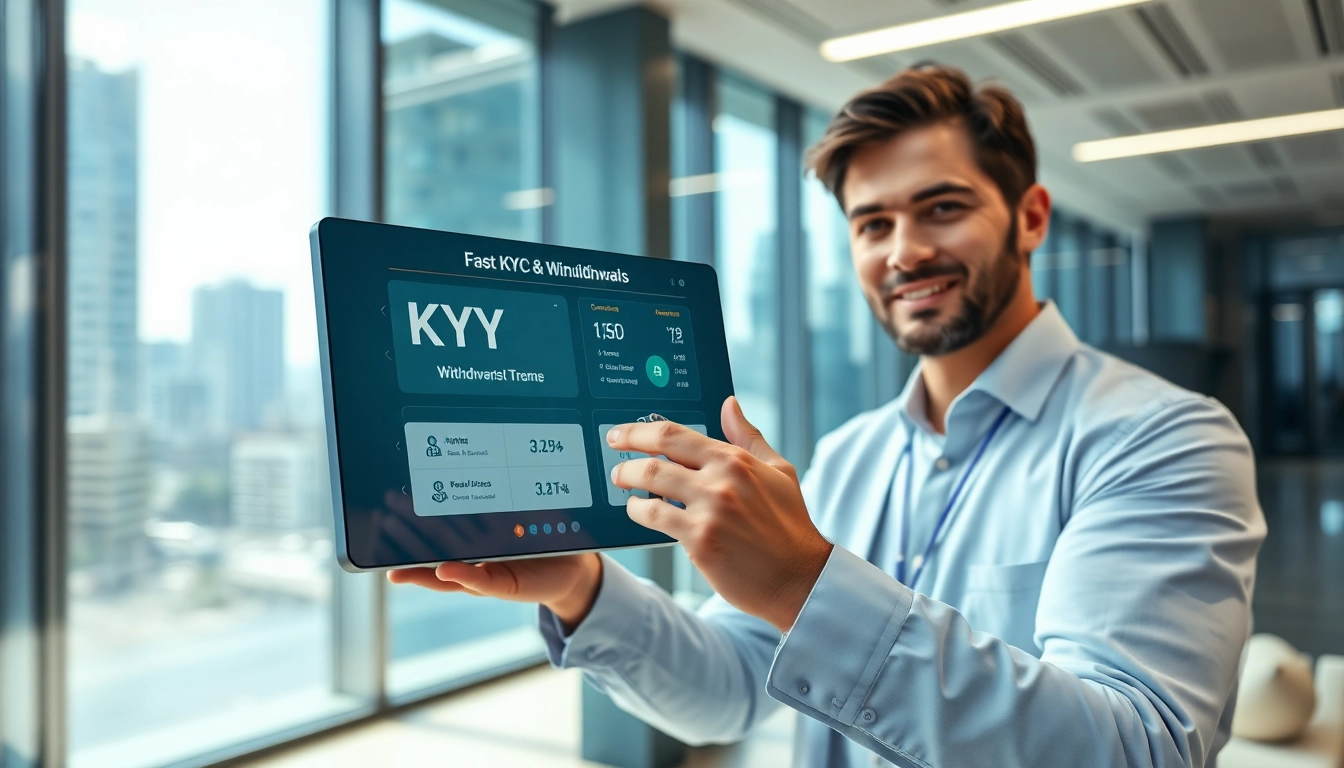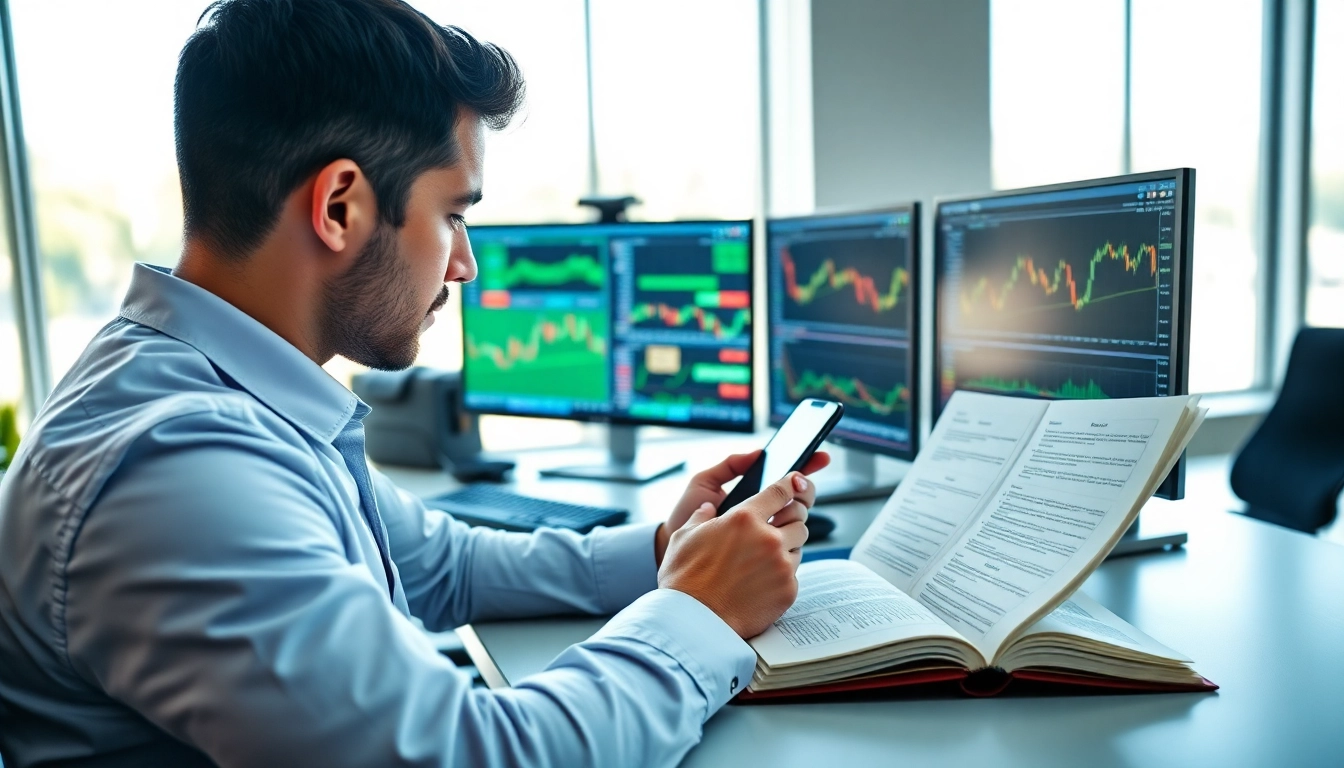Understanding Trade Futures Basics
In the ever-evolving landscape of investment opportunities, trade futures stands out as a dynamic and potentially lucrative avenue. Futures contracts are not merely financial instruments; they represent an intricate interplay between speculation, hedging, and the management of market risks. This guide aims to unpack the foundations of trading futures, clarify essential terminologies, and illuminate the role futures play in the broader financial marketplace.
What Are Futures Contracts?
At its core, a futures contract is a legally binding agreement to buy or sell a specific asset at a predetermined price on a set future date. These contracts are pivotal in the derivatives market and can involve a wide variety of underlying assets, including commodities like oil and wheat, financial instruments such as stock indices and currency pairs, and even cryptocurrencies like Bitcoin. Traders engage in futures contracts for several reasons:
- Speculation: Traders aim to profit from fluctuating prices by buying low and selling high.
- Hedging: Producers and consumers of commodities use futures contracts to lock in prices, ensuring budget predictability.
- Leverage: Futures allow traders to control large positions with relatively small capital outlays.
The Role of Futures in Financial Markets
Futures contracts play a critical role in enhancing liquidity, price discovery, and hedging within financial markets. They serve multiple stakeholders:
- Hedgers: Participants such as farmers or manufacturers use futures to mitigate the risk of price fluctuations that can affect their operational costs or profit margins.
- Speculators: These market participants bet on price movements, often providing liquidity that helps facilitate trading.
- Investors: Futures contracts allow investors to gain exposure to various asset classes without the need to own the underlying asset directly.
Key Terminology in Trade Futures
To navigate the complexities of futures trading, one must become familiar with essential terminology. Below are critical terms often encountered in futures market discussions:
- Contract Size: The quantity of the underlying asset that the contract represents.
- Expiration Date: The last day on which the contract can be settled.
- Delivery Month: The month in which the contract is set to expire.
- Settlement: The method by which the contract will be settled, either through physical delivery or cash settlement.
How to Get Started with Trade Futures
Venturing into futures trading requires careful preparation and a solid understanding of both the market and the mechanics of trading. Here are the key steps to initiate your futures trading journey.
Selecting a Futures Broker
Choosing the right futures broker is paramount to your success. Brokers differ in fees, trading platforms, and support services. Here are essential aspects to consider:
- Regulation: Ensure your broker adheres to regulations set by the Commodity Futures Trading Commission (CFTC) to safeguard your trades.
- Trading Fees: Compare commission structures; many brokers offer competitive rates but may charge different fees for different types of trades.
- Platform and Tools: The trading platform should provide essential features like real-time data, charting tools, and risk management options.
Setting Up Your Trading Account
Once you’ve selected a broker, the next step is to set up a trading account. This process typically involves:
- Completing a registration process that verifies your identity.
- Funding your account – brokers generally have minimum balance requirements.
- Familiarizing yourself with the broker’s trading platform through demos or tutorials.
Understanding Margin Requirements
Margin trading is a highlight of futures trading, enabling traders to control larger positions with a smaller investment. However, it’s critical to understand how margin works:
- Initial Margin: This is the minimum amount you need to deposit to initiate a position.
- Maintenance Margin: This is the minimum amount required in your account to keep the position open.
- Margin Calls: If the account balance drops below the maintenance margin, your broker may issue a margin call, requiring you to deposit more funds or close positions.
Advanced Trading Strategies in Futures
As you gain experience in futures trading, applying advanced strategies can greatly enhance your profitability. Below are essential strategies to consider.
Technical Analysis for Trade Futures
Technical analysis involves studying price patterns and market data to forecast future price movements. Key components include:
- Charts: Utilize various charts, including candlestick and bar charts, to analyze past price behavior.
- Indicators: Common indicators such as moving averages, Relative Strength Index (RSI), and Bollinger Bands can be helpful in making trading decisions.
- Volume Analysis: Consider the trading volume alongside price movements to validate trends.
Fundamental Analysis and Market Indicators
Fundamental analysis focuses on economic indicators and other data that impact market conditions:
- Economic Reports: Pay attention to reports such as GDP, unemployment rates, and inflation rates, as these can affect market sentiment and direction.
- Market News: Staying updated on geopolitical events, natural disasters, and major corporate announcements can provide insights into potential market movements.
- Sentiment Indicators: Tools that gauge market sentiment such as the Commitment of Traders (COT) report can guide trading strategies.
Risk Management Techniques in Futures Trading
Trading futures inherently involves risks. Implementing effective risk management techniques is crucial to long-term success:
- Diversification: Spread your investment across different contracts to mitigate risks associated with one asset class.
- Stop-Loss Orders: Setting stop-loss orders can prevent significant losses and protect your capital.
- Position Sizing: Determine the size of your trades based on your risk tolerance and investment goals.
Common Challenges and Solutions in Futures Trading
The journey of futures trading is accompanied by various challenges. However, awareness and preparedness can make a significant difference. Here are common challenges and suggested solutions.
Managing Volatility and Market Risks
Markets can be highly volatile, leading to fluctuating prices that can challenge trading strategies. Here are strategies to manage this risk:
- Stay Informed: Regularly follow economic indicators and market news to anticipate volatility.
- Use Options: Options can provide additional insurance against adverse price movements.
- Adjust Strategies: Being flexible with your strategies in response to changing market conditions can help mitigate risks.
Losing Trades: Learning from Experience
Even experienced traders face losing trades. Here’s how to learn from them:
- Review Trades: Analyze both winning and losing trades to understand what worked and what did not.
- Emotional Control: Developing emotional discipline can help traders avoid impulsive decisions based on fear or greed.
- Refine Strategies: Use insights gained from losses to refine and improve your trading strategies.
Regulatory Considerations in Futures Trading
Futures trading is highly regulated, and understanding these regulations is crucial to compliance and success:
- Know the Rules: Familiarize yourself with the trading rules set forth by bodies like the CFTC to avoid unintentional violations.
- Reporting Requirements: Be aware of any necessary reporting obligations regarding your trades and accounts.
- Broker Compliance: Ensure your broker adheres to regulatory guidelines, safeguarding your trading activities.
Performance Metrics and Evaluating Success
To truly assess your success in futures trading, regularly reviewing performance metrics is essential. Consistent evaluation leads to informed decision-making and improved strategies.
Tracking Your Trading Performance
Implement a systematic approach to track your trades:
- Trade Journal: Keep a detailed record of trades, including entry and exit points, strategies used, and market conditions to analyze performance over time.
- Performance Ratios: Utilize metrics like win/loss ratio and average profit/loss per trade to evaluate success.
- Review Periodically: Schedule periodic assessments of your trading history to adjust strategies accordingly.
Setting Realistic Goals in Trade Futures
Setting achievable goals provides direction and motivation for traders. Consider these strategies to effectively set goals:
- SMART Goals: Ensure your goals are Specific, Measurable, Achievable, Relevant, and Time-bound.
- Short-term vs. Long-term: Distinguish between immediate trading goals and broader investing objectives.
- Adjust as Needed: Be flexible with your goals and adjust them based on market conditions and personal performance.
Using Technology to Enhance Trading Efficiency
In today’s digital era, technology is an indispensable ally for traders:
- Trading Platforms: Use advanced platforms that offer features like algorithmic trading, real-time analytics, and user-friendly interfaces.
- Mobile Trading: Leverage mobile applications to monitor positions and execute trades on the go.
- Data Analytics: Implement tools for data analysis that can provide insights into historical trends and predictive modeling.



